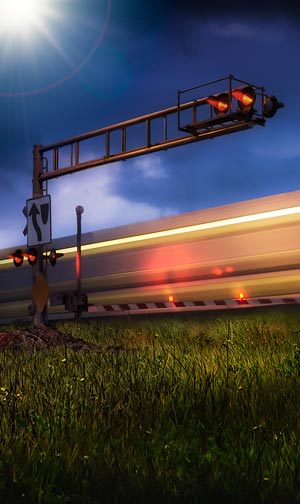3 injured, one killed in Mississippi train accident at unguarded crossing
A tragic train accident in McComb, Mississippi has left three youths dead and one critically injured. Those who lost their lives were aged 17, 12, and 2 years old. The survivor is 17.
The Amtrak train struck the vehicle at an unguarded crossing. There were no lights or gates to warn motorists of the approaching train. The track speed for the area is 60 MPH.
The local investigation has simply concluded that the car failed to stop for the approaching train. This simplistic approach to an investigation misses all the real crossing safety issues. It would be analogous to the investigation of a shooting which concluded that "the victim of the shooting was killed because he was in the way of the bullet." Why are unguarded crossings allowed to exist on high speed rail corridors in Mississippi, but not in northeastern states? Who decided that these known safety deficiencies should be allowed to exist in Mississippi?
The Railroad Highway Grade Crossing Handbook, 2nd Edition (1986) published by the United States Department of Transportation states: "It is desirable that all crossings located on high speed rail corridors either be closed, grade separated, or equipped with automatic gates.” Much earlier (April 20, 1976) the National Transportation Safety Board recommend a requirement that flashing lights and gates should be the "minimum" protection at all crossings used by commuter trains, and urged development of a program to improve all grade crossings used by commuter trains. This is all consistent with the American Railway Engineering and Maintenance of Way Association’s Committee No. 17, recommendation that “…grade crossings located in ‘high speed territories’ be eliminated.”
Every credible study on the issue has concluded that the installation of lights and gates will save over 90% of the lives needlessly lost at unguarded crossings. It is outrageous that so many lives are lost each year at crossings where proven technology that has existed for over a century could have saved those lives. It is hard to accept that this preventable accident is now part of the statistical proof that unguarded crossings should never be allowed to exist on high speed rail corridors.


